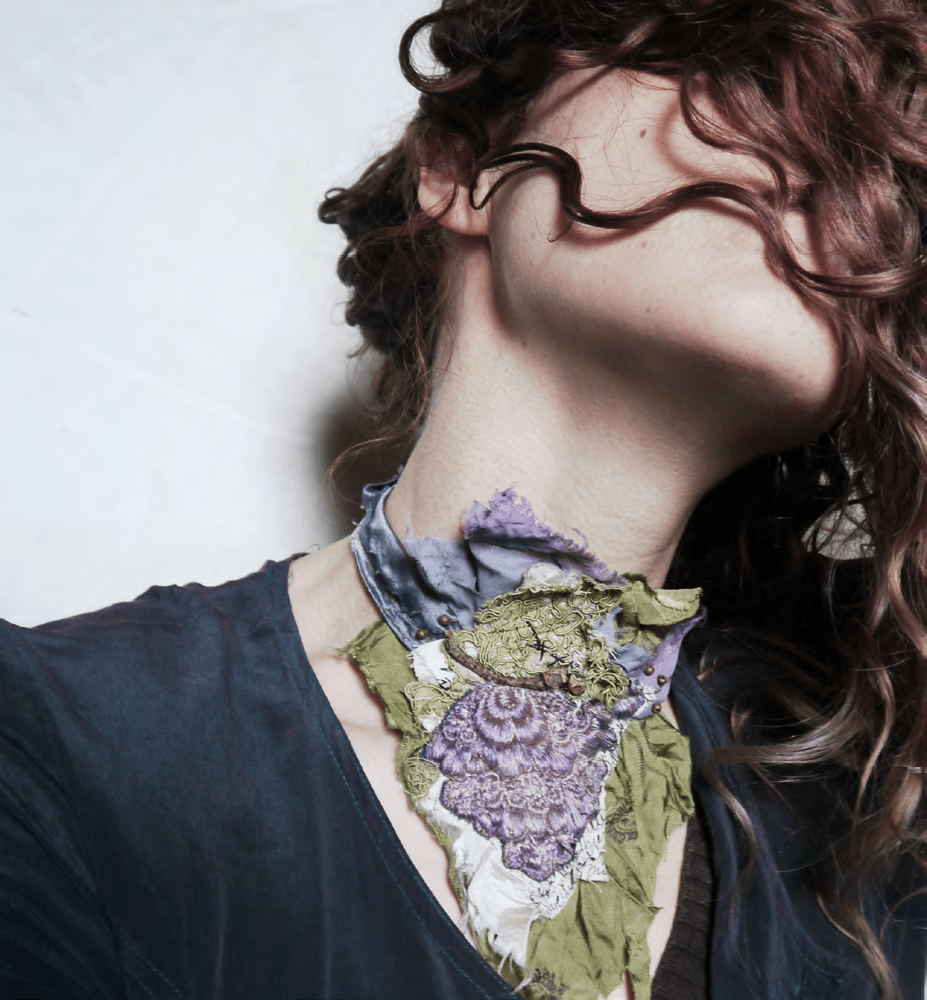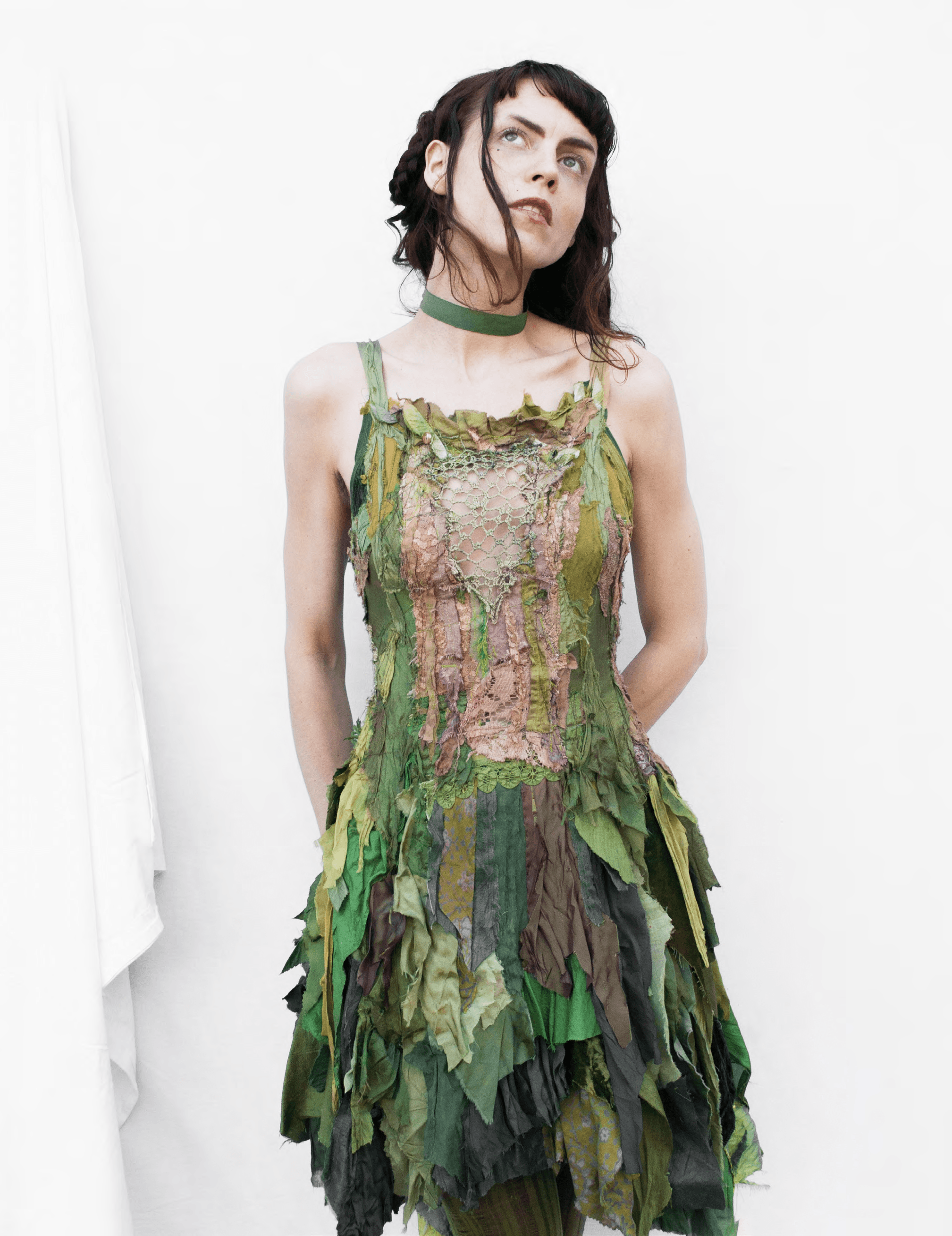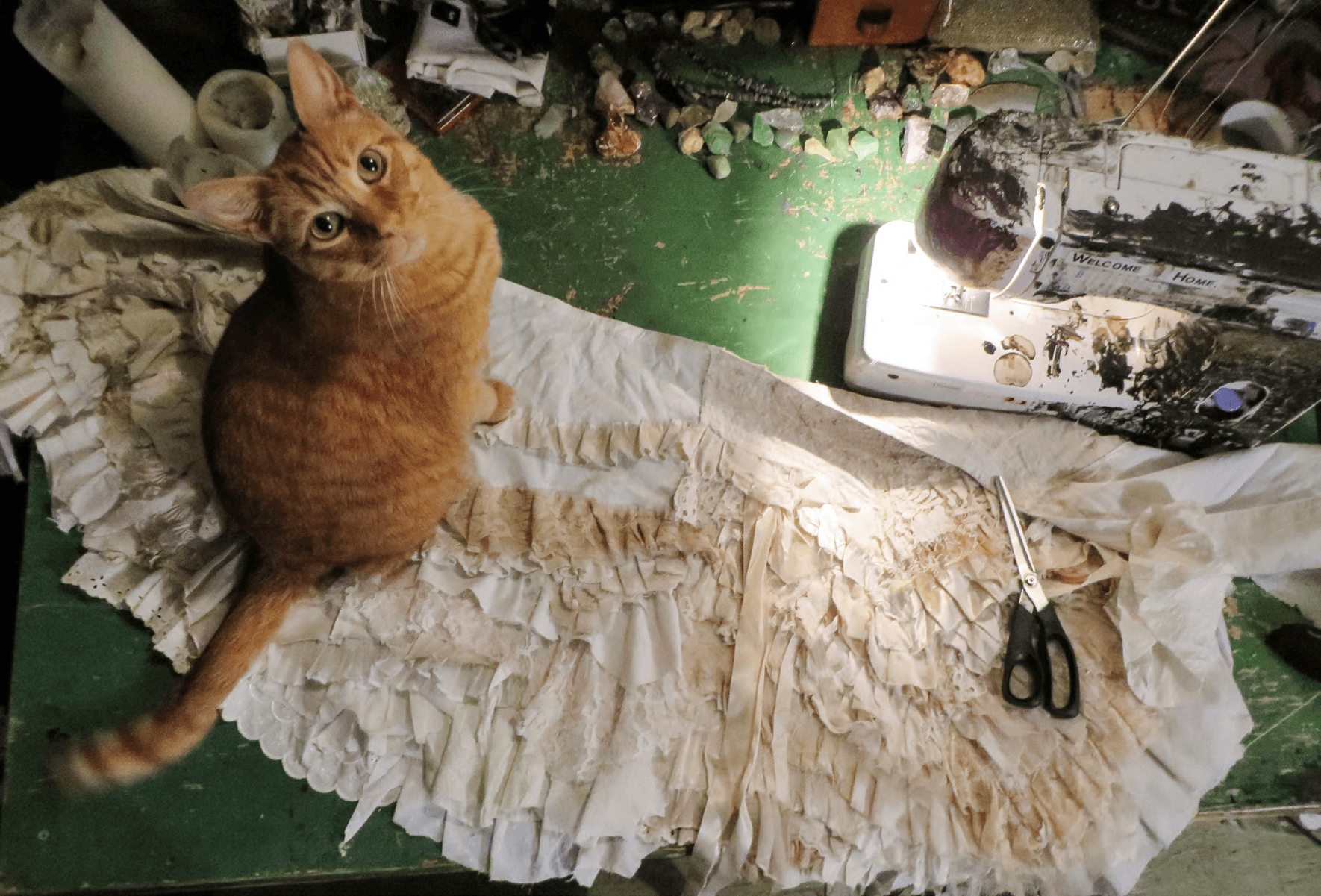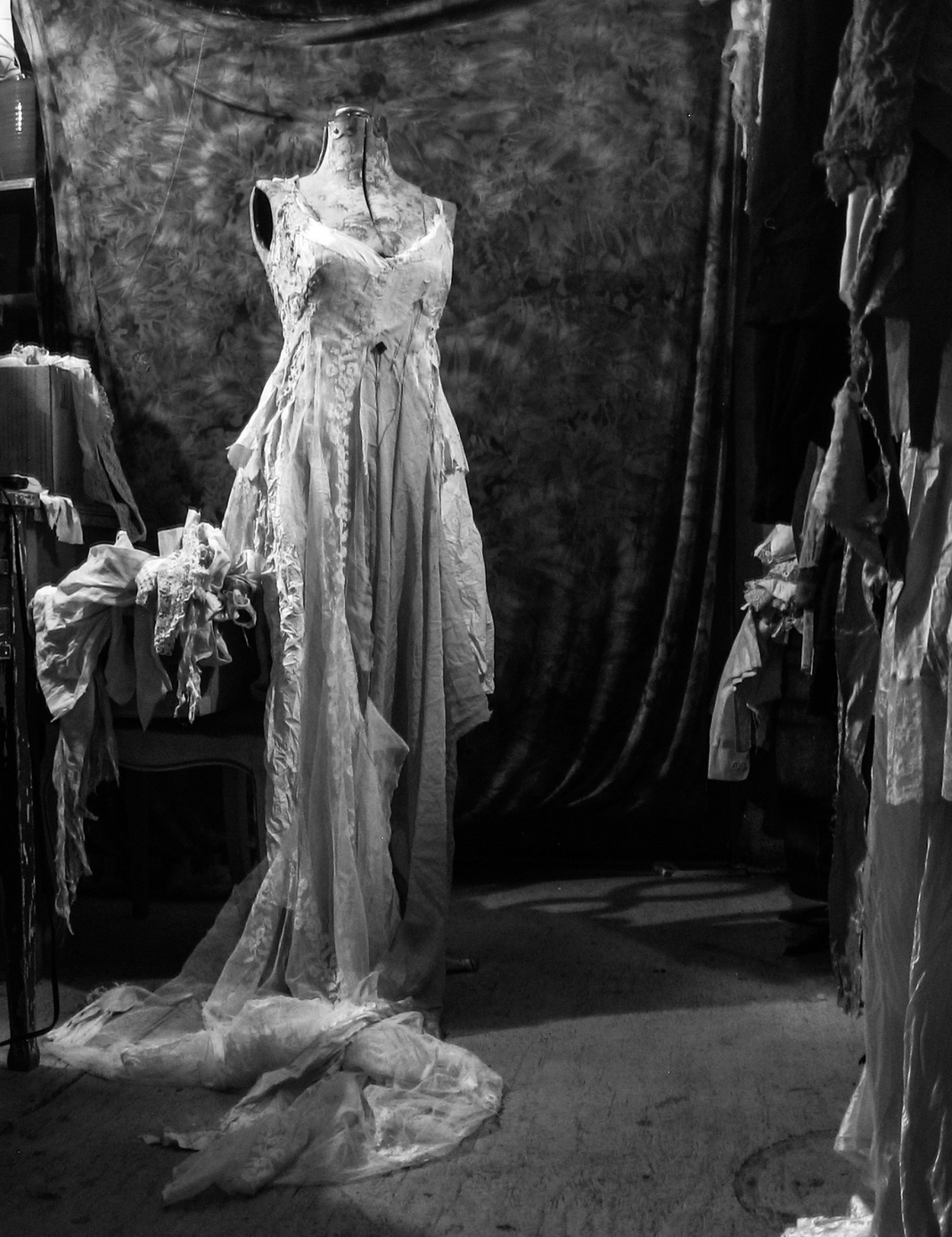Selene Ahnese, founder of the company Gibbous Fashions, is a stitch witch. The fabric storyteller is based in Olympia, Washington. She collects scraps of fabric—tattered velvets, embroidered silk slips, lace remnants—and with fine stitches like runes, she writes a new wearable spell with the pieces. Her admirers embrace those spells: her new work is often snatched up within minutes of her sharing it online, whether it be one of her signature raggedy bonnets or collars, or a more complicated design like a dress or deconstructed jacket.

Gibbous Fashions got its name because of the moon phase under which Ahnese was born. A self-taught artist, she has been sewing since the age of eleven, when she received her first sewing machine for her birthday. She fondly named the machine Stella and would spend her teen years and beyond roaming the old-growth forests of the Pacific Northwest and coming home to Stella, creating fabric pieces inspired by the dripping mosses, lichens, and plants she would spy during her days. Sadly, Stella is now retired after many years of use. Ahnese’s sewing machine repairman kept Stella running for many years, but the tearful day finally came that he couldn’t fix her. Ahnese now works with six machines “in various states of functionality, but I stopped naming them after Stella’s retirement. I’ve found it’s harder to let them go when I do.”
This magical sense of animism and whimsy extends to the fabrics Ahnese uses in her creations. “I collect the lost, the broken, the left behind,” she says. “I listen and learn from these stories, then transmute and reincarnate them into new forms of art.” The result often feels like a partnership, she explains. “When you think about the accumulated history and character in found materials, the process can end up feeling like a collaborative spell, with many elements and motivations.” It isn’t always the case that a garment’s purchaser understands the depth of this interaction, but some understand. Ahnese tells the story of a customer in San Francisco who described an experience she had with a dress. “All the different antique fabrics were telling her their stories, all the ladies who had made the lace and handkerchiefs. She got to know that dress incredibly well. She was crying when she told me, and it sounded very intense. It was overwhelming but made a lot of sense to me. It’s pretty rare that people are aware of the magic and energy of the garments on that level. It’s usually more of an aesthetic appreciation.”

When asked for examples of the stories she has felt when holding these old fabrics, Ahnese replies, “I live, work, and sleep in landscapes of old clothes and fabrics, so there’s a kind of immersion factor that can make it hard for me to think about the exchange objectively. It seems like there’s a continuous engagement with the energy of these materials and that this guides me in the process of reincarnating them. There are definitely particular pieces that have especially strong and memorable impressions. Certain things give off such an intense feeling of their past wearers that it can be overwhelming, for better or for worse. I have some antique dresses that feel so full of love and a sort of gentle mother farmhouse energy that every time I wear them I feel really calm and safe and protected. There are also certain pieces I find that are beautiful or useful but they feel wrong to me, so I don’t bring them home. The clothes from the 1800s and early 1900s have especially powerful stories, and I am very careful and respectful of them. They’re like 120-year-old people.”
Ahnese is not only cautious of avoiding garments and fabrics with negative energy, but she makes sure her energy is positive and healing as she works on her pieces. “I’ve made some special amulets for friends with spells sewn into them for protection, abundance, calmness,” she says. “I feel like even when it’s not conscious, a lot of what I’m thinking or working with personally gets channeled into the creations.”

Over the years of creating garments, Ahnese has adapted her techniques to each situation as needed. Although her early work was mostly done with “chaos stitching,” as she calls it, “sewing things together wildly without much forethought and altering them to make a garment afterward,” she has had to adapt through years of commissions to become more methodical and to embrace planning and pinning. She sees benefits and drawbacks to each of the two methods and tries now to do a mix of both techniques. “Sometimes it feels best to be led by colors and instinct, to sew fabric together without having a goal in mind. It can also feel like a reprieve to do so when I’ve been working on very defined, purpose-driven projects. I end up with a lot of oddly beautiful stitchy pieces of fabric, which lead to some really wonderful garments that I wouldn’t necessarily have thought of making.” However, she also finds joy in the elegant and precise process of building her dresses in stages, making the foundation fit and flow well, and then working on the sculptural layers, sitting with a dress form for hours, arranging, pinning and unpinning different fabrics until they feel right. Ahnese then ends with what she calls the “cake-decorating stage,” adding the frills, handwork, and adornments.
It seems quite clear that Ahnese is a magic maker, working with lace and velvets instead of herbs and candles. But what sort of witch hat would such a stitch witch choose to design for herself ? “I think my inclination would lean toward a reversible witchy elf bonnet, silk velvet in mossy green on one side and raven black on the other. It would be embroidered with tiny silver stars and have secrets sewn into the lining, accessorized with a strand of lace lichen and a sprig of red holly berries. I should probably make this now!”
“When you think about the accumulated history and character in found materials, the process can end up feeling like a collaborative spell, with many elements and motivations.”
Find Selene Ahnese on Instagram and Facebook @gibbousfashions or her shop gibbousfashions.com/present/shop/.




































